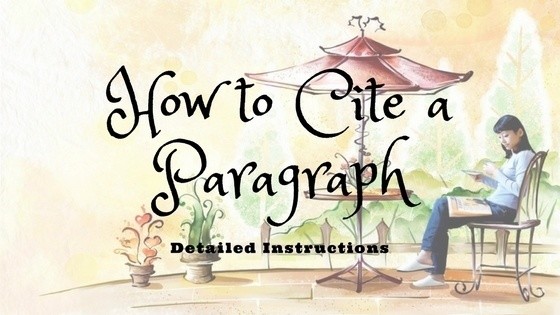Mar 12 2018

Once you move into the upper levels of high school and into college, you are expected to properly cite the sources you use. This is true if you use direct quotes or simply paraphrase your source. Without a bit of education on the topic, this can be a bit confusing. Still learning how to cite paraphrase is key. Failing to do so can have stiff consequences. A lenient instructor may decide to simply teach you a lesson by knocking off significant points or giving you a failing grade. A stricter one could possibly be within their rights to accuse you of plagiarizing.
That’s not meant to induce fear. Anyone can learn how to cite a paraphrase. It doesn’t matter if your source is an article, essay, poem, or website you can learn how to cite a paraphrase. Keep reading to learn more about paraphrasing and citation.
First: How do You Paraphrase?
In academic writing, there are three ways to communicate ideas that are not your own. The first is with a direct quote. This is when you copy a small amount of content directly (a sentence or a paragraph). This must be enclosed in quotation marks. The author should be credited, and the quote should be copied from a limited section. The second is a summary where the author’s main points are restated in your words. Finally, there is the paraphrase. The best way to understand how to paraphrase is to think of paraphrasing being in the middle. You can encompass more material when you paraphrase than when you quote. However, to paraphrase correctly, you should keep things more focused than you would when you write a summary.
How to Paraphrase and Properly Cite in Different Formats
Depending on your citation format, you may have to approach your in-text citation differently. For example, if you’re learning how to paraphrase MLA, you would use the standard MLA approach of a parenthetical citation. In APA you also use parenthetical citations although the details are a bit different.
At this point, you may be thinking that learning how to cite a paraphrase is pretty simple, just based on these two citation formats. Before you assume that, remember that these are only two of many potential citation formats. In addition to this, there are plenty of complexities to confuse this issue.
This includes:
- Citing sources when there is no author listed
- Citing paraphrases when there are multiple authors
- Citing sources from an audio recording
- Citing paraphrases taken from the bible or other religious texts.
While you can probably commit many of these rules to memory, you may need a tool to help you at least some of the time. Think about it. What do you do if you have challenging citations to do in MLA, and it’s a format that you rarely use? An MLA citation generator may be exactly what you need. Obviously, if MLA is easy for you, a citation generator for other formats might be preferable as well.
Don’t Forget Your Bibliography or Works Cited Page
Remember that your obligation to credit your source doesn’t end within content citations. Virtually every academic work requires some form of works cited page or bibliography. That’s a lot of additional work on top of the writing, research, note-taking, and other tasks you’ve tackled. Why not get the help of a useful tool such as a free bibliography generator.
So….
Learning the basics of paraphrasing and providing proper credit through citations is something every student should learn. However, once you know the basics and understand why this is important, there is absolutely no reason not to use any tool at your disposal to take care of this task.
